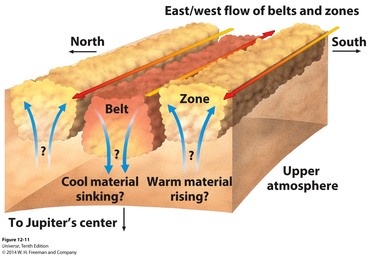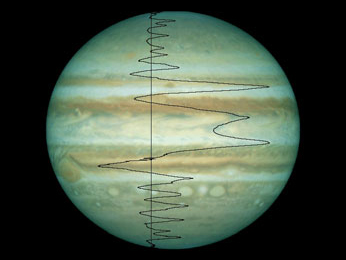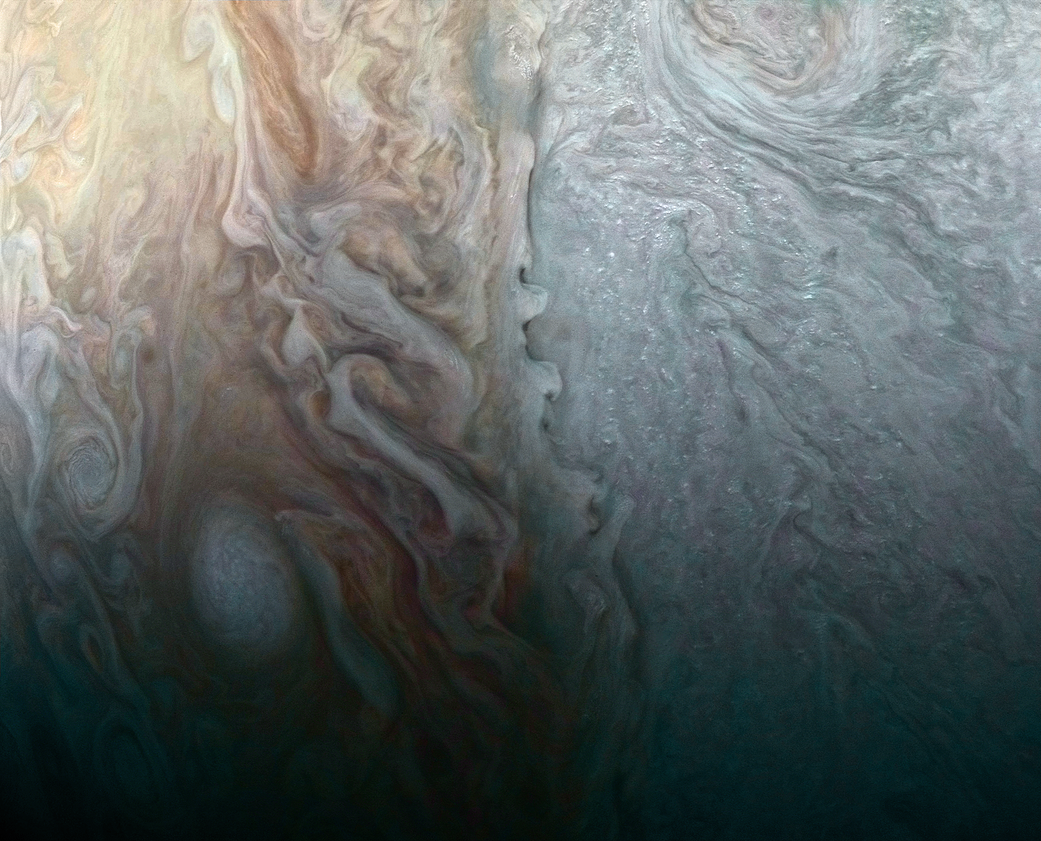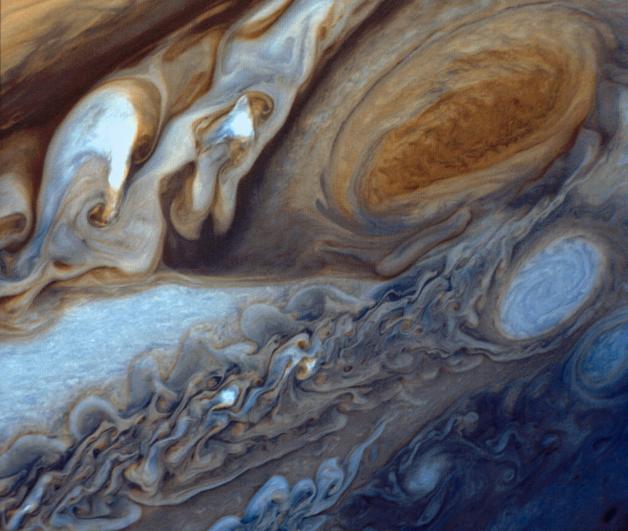WHY IS Jupiter Striped?
|
The Jovian atmosphere features a similar array of convection cells to Earth, with the equatorial Hadley cell demonstrated in the figure to the right. The dark regions are belts, and the lighter regions are zones.
Jupiter has the fastest rotation rate of any planet, taking a mere 9 hours, 55 minutes to revolve about its axis. This results in a Coriolis parameter 2.4 times higher than on Earth. The planet's large size (11 times Earth's radius) also results in a centrifugal acceleration that becomes significant, resulting in the planet being visibly distended at the equator. |
The winds on Jupiter are highly stable, and can reach 150 m/s. The black line charts latitudinal wind speed, with a clear eastward asymmetry. (NASA Goddard)
|
|
Driven by large-scale wind cells, the belts and zones display a Kolmogorov cascade of turbulent scales, as well as vivid Kelvin-Helmholtz instabilities at the interfaces between bands. (Juno)
|
EKMAN Pumping

Ekman pumping drives the turnover of material between the belts and the zones. As the wind bands curl under the Coriolis effect, their stresses move material longitudinally. To preserve mass continuity, vertical flows are induced. However, this process is not as well-defined as in Earth's oceans, since our understanding of the dynamics below the cloudtops, where the pressure compresses hydrogen into an incompressible slush, is limited. Simulations (Heimpel, et al., 2005) suggest that the broad equatorial zone is a deep Ekman cell powered by the upwelling of hot material within the planet, while the narrow temperate bands are shallow cells mostly driven by wind stresses.
Persistence of the Great Red Spot
The Great Red Spot has been continuously tracked since the 1830s and may have been observed since the era of Cassini. This persistence is not fully understood, but may be related to its location at the junction of a belt-zone pair. Due to the lack of a anchoring, no-slip bottom boundary the duration of vortices in the Jovian atmosphere is driven by the torque from the surrounding bulk flow. Vortices that form tend to lose vorticity to turbulent diffusion, and fall apart as the bulk flow strips material away. The Great Red Spot is an anticyclone (counterclockwise flow, being in the southern hemisphere), and sits south of an eastward belt and north of a westward belt. Thus, the torque on the anticyclone from the passing winds is consistent with the direction of motion, "spinning up" the Spot.
However, tracking of features to deduce wind patterns also suggest a minimum in vorticity at the center of the Spot, an inherently unstable configuration (Shetty, 2007), suggesting that wind shears are not sufficient to explain the Spot's persistence.
However, tracking of features to deduce wind patterns also suggest a minimum in vorticity at the center of the Spot, an inherently unstable configuration (Shetty, 2007), suggesting that wind shears are not sufficient to explain the Spot's persistence.
Create a free web site with Weebly


